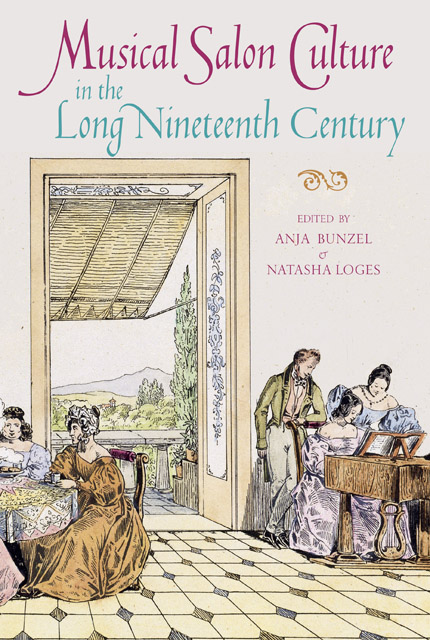7 - The Salon Singer as Subject of Satire in France during the July Monarchy
Published online by Cambridge University Press: 17 January 2023
Summary
A fixture of upper-class social life in France during the July Monarchy, the chanteur de salon or salon singer provided a target for satire that reflected changes taking place in society as well as in musical tastes during the period. The Revolution of 1830 that ushered in the eighteen-year reign of Louis-Philippe brought social as well as political change to France with the empowerment of the upper bourgeoisie. Among its effects on social life in Paris, Marie d’Agoult noted that the change in regime enabled a younger generation of aristocrats like herself to ‘open our salons to new people, to men of lesser condition, bourgeois, the newly ennobled, writers, artists whose fame was beginning to arouse our curiosity’. With the abolition of censorship, political satire flourished, notably in new journals like La Caricature Morale, Politique et Littéraire (1830–35) and Le Charivari (1832–93), both founded by the publisher Charles Philipon, who famously caricatured Louis-Philippe as a pear. Technological advances in printing, in particular in lithography, facilitated the mass production of illustrated publications, resulting in the 1830s being what one historian has called ‘the satiric decade’. However, the reintroduction of restrictive press laws in 1835, including prepublication censorship of illustrations, brought about a shift in subject matter from politics to society. As Keri Yousif notes, ‘Images of Paris and its inhabitants – the world of the theatre, artists, the bourgeoisie, the working classes – replaced those of the king, allowing the satirical and illustrated press to pass the censor and still entertain its audience’.
A phenomenon of the 1840s was the publication of physiologies, illustrated descriptions of various social ‘types’ from all walks of life. The physiologies were relatively inexpensive pocket-sized editions aimed at the general reading public, but there were also nicely bound anthologies destined for well-off bourgeois readers. The vogue was such that about 120 different physiologies were produced during the period 1840–42 alone. The inclusion of salon singers among the many types appearing in these publications attests to their status as a recognisable social phenomenon of the period. As David Tunley points out, ‘vocal music was the staple diet of the salons and drawing-rooms, and a number of excellent singers made their livelihood in the fashionable quarters by singing not only excerpts from the best-loved operas of the day, but also the latest romance or, as the century progressed, the more developed form known as mélodie’.
- Type
- Chapter
- Information
- Musical Salon Culture in the Long Nineteenth Century , pp. 109 - 122Publisher: Boydell & BrewerPrint publication year: 2019

